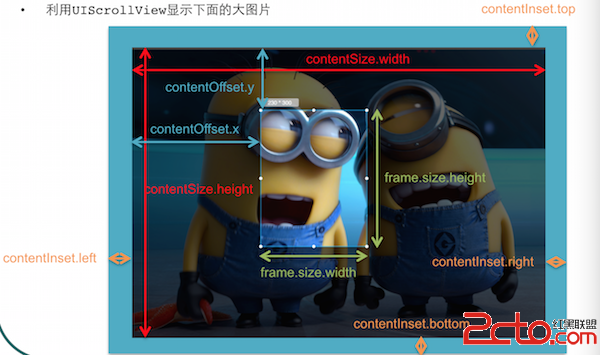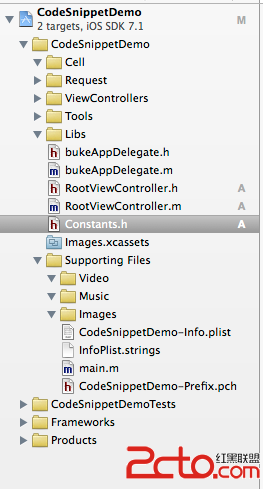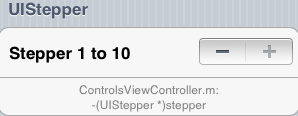iOS基礎之路:橫豎屏
iOS 中橫豎屏切換的功能,在開發iOS app中總能遇到。以前看過幾次,感覺簡單,但是沒有敲過代碼實現,最近又碰到了,demo嘗試了幾種情況,這裡就做下總結。
注意
橫屏兩種情況是反的你知道嗎?
UIInterfaceOrientationLandscapeRight與UIInterfaceOrientationMaskLandscapeRight都代表橫屏,Home鍵在右側的情況;UIDeviceOrientationLandscapeLeft則是Home鍵在左側。
一般情形
所有界面都支持橫豎屏切換
如果App的所有切面都要支持橫豎屏的切換,那只需要勾選【General】 中的【Device Orientation】,選擇希望支持的方向即可。
如上設置完之後,當設備豎屏的時候,所有的界面都是豎屏顯示的;而當設備橫屏Home在右側時,所有的界面會橫屏顯示。其他方向不支持,界面不會改變。
這裡有個坑:
在iOS 9 之後橫屏時,狀態欄會消失。
解決方法:確保plist 中的【View controller-based status bar appearance】為YES,然後重寫ViewController的 - (BOOL)prefersStatusBarHidden ,返回值是NO。
- (BOOL)prefersStatusBarHidden
{
return NO;
}
特殊情形
個別界面固定方向,其他所有界面都支持橫豎屏切換
這種情況,在【General】-->【Device Orientation】中設置好支持的方向後,只需要在這些特殊的視圖控制器中重寫兩個方法:
// 支持設備自動旋轉
- (BOOL)shouldAutorotate
{
return YES;
}
/**
* 設置特殊的界面支持的方向,這裡特殊界面只支持Home在右側的情況
*/
- (UIInterfaceOrientationMask)supportedInterfaceOrientations
{
return UIInterfaceOrientationMaskLandscapeRight;
}
個別界面支持橫豎屏切換,其他所有界面都固定方向
可能大多數App會是這種需求,某些特殊界面只能橫屏,如視頻播放類App。
這裡有兩種處理方式:
方式一
在【General】-->【Device Orientation】中設置好需要支持的所有方向。然後使用一個基類控制器,在基類控制器中重寫兩個控制橫豎屏的方法:
// 支持設備自動旋轉
- (BOOL)shouldAutorotate
{
return YES;
}
// 支持豎屏顯示
- (UIInterfaceOrientationMask)supportedInterfaceOrientations
{
return UIInterfaceOrientationMaskPortrait;
}
再然後,特殊的界面上再重寫這倆方法,讓其可以自動切換方向。
// 如果需要橫屏的時候,一定要重寫這個方法並返回NO
- (BOOL)prefersStatusBarHidden
{
return NO;
}
// 支持設備自動旋轉
- (BOOL)shouldAutorotate
{
return YES;
}
// 支持橫屏顯示
- (UIInterfaceOrientationMask)supportedInterfaceOrientations
{
// 如果該界面需要支持橫豎屏切換
return UIInterfaceOrientationMaskLandscapeRight | UIInterfaceOrientationMaskPortrait;
// 如果該界面僅支持橫屏
// return UIInterfaceOrientationMaskLandscapeRight;
}
方式二
用方式一的方法,還需要借助一個基類,所有的控制器都要繼承這個基類,太麻煩?
另一種方式,是借助通知來控制界面的橫豎屏切換。
還是整個App中大部分界面都是豎屏,某個界面可以橫豎屏切換的情況。
首先,在【General】-->【Device Orientation】設置僅支持豎屏
Device Orientation
然後在特殊的視圖控制器裡的ViewDidLoad中注冊通知:
[[UIDevice currentDevice] beginGeneratingDeviceOrientationNotifications];
[[NSNotificationCenter defaultCenter] addObserver:self selector:@selector(deviceOrientationDidChange) name:UIDeviceOrientationDidChangeNotification object:nil];
通知方法的實現過程:
- (void)deviceOrientationDidChange
{
NSLog(@"deviceOrientationDidChange:%ld",(long)[UIDevice currentDevice].orientation);
if([UIDevice currentDevice].orientation == UIDeviceOrientationPortrait) {
[[UIApplication sharedApplication] setStatusBarOrientation:UIInterfaceOrientationPortrait];
[self orientationChange:NO];
//注意: UIDeviceOrientationLandscapeLeft 與 UIInterfaceOrientationLandscapeRight
} else if ([UIDevice currentDevice].orientation == UIDeviceOrientationLandscapeLeft) {
[[UIApplication sharedApplication] setStatusBarOrientation:UIInterfaceOrientationLandscapeRight];
[self orientationChange:YES];
}
}
- (void)orientationChange:(BOOL)landscapeRight
{
if (landscapeRight) {
[UIView animateWithDuration:0.2f animations:^{
self.view.transform = CGAffineTransformMakeRotation(M_PI_2);
self.view.bounds = CGRectMake(0, 0, SCREEN_WIDTH, SCREEN_HEIGHT);
}];
} else {
[UIView animateWithDuration:0.2f animations:^{
self.view.transform = CGAffineTransformMakeRotation(0);
self.view.bounds = CGRectMake(0, 0, SCREEN_WIDTH, SCREEN_HEIGHT);
}];
}
}
// 用到的兩個宏:
#define SCREEN_WIDTH ([UIScreen mainScreen].bounds.size.width)
#define SCREEN_HEIGHT ([UIScreen mainScreen].bounds.size.height)
最重要的一點:
需要重寫如下方法,並且返回NO。
- (BOOL)shouldAutorotate
{
return NO;
}
這樣,在設備出於橫屏時,界面就會變成橫屏,設備處於豎屏時,界面就會變成豎屏。
填坑
上面方式二,因為【General】-->【Device Orientation】因為只設置了豎屏,所以當橫屏時,如果有鍵盤彈出,鍵盤是豎屏時的樣式。
解決辦法:在【General】-->【Device Orientation】中加上橫屏時的方向。
如果VieController 是放在UINavigationController或者UITabBarController中,需要重寫它們的方向控制方法。
// UINavigationController:
- (BOOL)shouldAutorotate
{
return [self.topViewController shouldAutorotate];
}
- (UIInterfaceOrientationMask)supportedInterfaceOrientations
{
return [self.topViewController supportedInterfaceOrientations];
}
// UITabBarController:
- (BOOL)shouldAutorotate
{
return [self.selectedViewController shouldAutorotate];
}
- (UIInterfaceOrientationMask)supportedInterfaceOrientations
{
return [self.selectedViewController supportedInterfaceOrientations];
}
如果想要點擊某個按鈕之後,強制將豎屏顯示的界面變成橫屏呢?
有人可能會想到這樣寫:
// 橫屏
- (IBAction)landscapAction:(id)sender {
[[UIApplication sharedApplication] setStatusBarOrientation:UIInterfaceOrientationLandscapeRight];
[self orientationChange:YES];
}
但是按照上面的寫法,會導致返回到之前的界面時,視圖方向錯誤,即使返回前執行如下代碼:
[[UIApplication sharedApplication] setStatusBarOrientation:UIInterfaceOrientationPortrait];
[self orientationChange:NO];
也沒有作用,下面是在開源工程中無意看到的寫法:
// 橫屏
- (IBAction)landscapAction:(id)sender {
[self interfaceOrientation:UIInterfaceOrientationLandscapeRight];
}
// 豎屏
- (IBAction)portraitAction:(id)sender {
[self interfaceOrientation:UIInterfaceOrientationPortrait];
}
- (void)interfaceOrientation:(UIInterfaceOrientation)orientation
{
if ([[UIDevice currentDevice] respondsToSelector:@selector(setOrientation:)]) {
SEL selector = NSSelectorFromString(@"setOrientation:");
NSInvocation *invocation = [NSInvocation invocationWithMethodSignature:[UIDevice instanceMethodSignatureForSelector:selector]];
[invocation setSelector:selector];
[invocation setTarget:[UIDevice currentDevice]];
int val = orientation;
[invocation setArgument:&val atIndex:2];
[invocation invoke];
}
}
上面的方法會將設備的方向強制設置為某個方向,然後再監控設備方向改變的通知,即可實現橫豎屏切換。
-
No
- 下一頁:iOS基礎之路:NSTimer
- IOS基礎UI之(八)UIScrollView
- iOS開發系列--IOS程序開發概覽ios基礎
- iOS基礎之CollectionView(集合視圖)
- IOS基礎-UIButton
- iOS基礎:UIEvent事件類型簡單總結(觸摸、搖一搖、遠程控制)
- iOS基礎控件之UISegmentedControl
- iOS基礎8:自定義MyData/自定義SQLite用於網絡判斷,版本判斷,圖片緩存處理,下載或者上傳的GET或POST請求,加密手段,.數據解析
- IOS基礎-UITextField
- iOS基礎8:自定義MyData/自定義SQLite用於網絡判斷,版本判斷,圖片緩存處理,下載或者上傳的GET或POST請求,加密手段,.數據解析
- IOS基礎_Block語法的簡單使用




